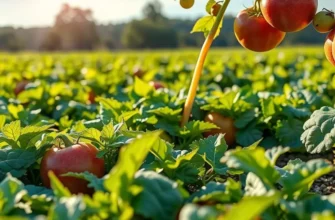Reducing plate waste at home goes beyond just saving money; it’s about cultivating a mindful relationship with food. Food management practices can transform our kitchens into eco-friendly spaces, allowing us to enjoy meals while respecting our planet. By implementing a few straightforward strategies, everyone can contribute to reducing waste and making the most of every ingredient.
Mindful Portion Control: A Key to Reducing Plate Waste

Understanding portion control is crucial for reducing food waste at home. By serving appropriate quantities, you not only help minimize leftovers but also promote healthier eating habits. One effective strategy is to start by familiarizing yourself with what a standard portion looks like for different types of food. For instance, a serving of meat is typically the size of a deck of cards, while a portion of cooked pasta should fit into a cupped hand.
Utilizing smaller plates can also make a significant difference in how we perceive our meals. Large plates can lead to over-serving and, subsequently, overeating or discarding excess food. A study has shown that people tend to consume less food when using smaller dinnerware because portions appear more substantial, enhancing satisfaction with less.
Engaging in mindful eating practices helps in gauging true hunger and fullness, aiding portion control. Before serving yourself, take a moment to assess how hungry you actually are. This reflection can prevent the habitual act of filling your plate mindlessly. Additionally, eating slowly, savoring each bite, and pausing between servings allows your body to register feelings of fullness, further limiting the likelihood of waste.
Another practical approach is to encourage leftovers. With intentional meal planning, you can strategically prepare meals with the anticipation of delicious leftovers. This doesn’t mean sacrificing the freshness or quality of your next meal; instead, it offers a convenient and eco-friendly way to ensure nothing goes uneaten. For tips on storing these leftovers safely, consider exploring resources that focus on safer storage of sauces.
When preparing meals, consider batching ingredients for upcoming days to prevent cooking more than necessary. This approach can also streamline meal preparation, reducing stress and enhancing kitchen efficiency. By adopting these mindful portion control techniques, you’ll find a noticeable reduction in food waste and potentially discover new ways to appreciate various flavors and meal experiences. Ultimately, these strategies cultivate a more sustainable and conscious approach to eating while respecting the resources that contribute to our meals.
Smart Food Storage Techniques: Prolonging Shelf Life

Proper food storage is pivotal in ensuring that your family’s meals are both fresh and flavorful, helping to minimize food waste. To make the most out of what you buy, it’s essential to employ a range of smart storage techniques that adapt to different types of produce, pantry staples, and leftovers.
Refrigeration Tips:
To maximize the effectiveness of your fridge, maintain its temperature below 40°F (4°C). This prevents bacterial growth that can lead to spoilage. Different areas of your refrigerator are better suited to specific foods. For instance, the top shelf’s consistent temperature makes it ideal for leftovers and drinks, while the lower shelves, being the coldest, are perfect for storing raw meats. Utilize crisper drawers to regulate humidity, keeping fruits with low humidity and vegetables with high to avoid wilting.
Optimal Pantry Organization:
A well-organized pantry not only looks appealing but also helps in keeping track of what’s available and prevents overbuying. Store dry goods such as rice, pasta, and flour in a cool, dry place to keep them from deteriorating. Group and label similar items, like canned goods and spices, to make them easy to spot and access. Rotating older items to the front ensures they are used first, reducing waste.
Airtight Container Use:
Investing in airtight containers is crucial for prolonging the shelf life of ingredients. These containers are particularly beneficial for grains, cereals, and nuts, shielding them from humidity and pests. When storing leftovers, clear containers are ideal as they help you quickly identify what’s inside—an easy visual reminder to consume before it spoils.
Specialized Storage for Fruits and Vegetables:
Each type of fruit and vegetable has unique storage needs. For instance, potatoes and onions should be kept in a cool, dark place but separately to prevent potatoes from sprouting. Bananas, tomatoes, and citrus fruits are best stored at room temperature to maintain taste and texture. Conversely, berries should be kept in the fridge, washed only right before eating. This careful consideration prolongs freshness and flavor.
Leftover Management:
View leftovers as an opportunity rather than a burden. To ensure these meals don’t end up in the trash, label and date containers to keep track of freshness. Today’s dinner can become tomorrow’s lunch or a component of a new dish. Employing meal planning strategies can aid in intentional cooking that minimizes excess.
For more ideas on reducing kitchen waste, you may explore low-waste cooking and prep strategies. Adapting these practical storage methods can significantly curb household food waste, yielding environmental and economic benefits.
Final words
Implementing practical strategies for reducing plate waste can significantly impact not only your wallet but also the environment. Mindful portion control and smart food storage techniques can lead to healthier habits and a more sustainable lifestyle. Start with small changes in your kitchen, ensuring that every meal is enjoyed in its entirety. Together, we can contribute to a more responsible approach to eating, making the most of each ingredient while embracing a conscious eating culture at home.







